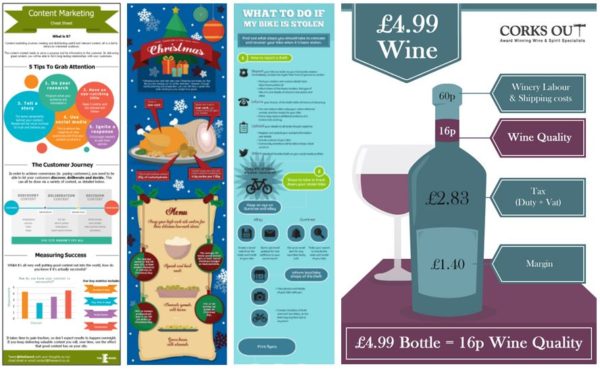The art of creating readable, informative and exciting content is not an easy process; it takes time, talent and knowledge. When you create a well written, popular blog, it’s a shame to just let it sit there and get lost in a sea of posts. This is where repurposing comes in.
If your content is popular and evergreen (continually relevant and stays fresh for readers), you can breath new life into it through repurposing.
What is repurposing content?
One of the biggest challenges faced by content marketers is the need to consistently create great content. For companies with small marketing departments, it can be even tougher. Juggling weekly blogs with original social posts and content promotion is a huge, time-consuming job.
By taking a popular piece of evergreen content and changing its format or intended audience, you can save time, create something that you know is strong and introduce it to a whole new range of people.
How will repurposing my content benefit me?
Marketing expert Salma Jafri sums up the reason behind repurposing content in a few words: “Create less, promote more”. By reusing previous ideas to influence new ones, you can do more in less time.

As well as this, repurposing older content allows you to apply the research you conducted for one piece of original work across additional content projects. This substantially cuts down on content creation time, as elements of a piece that have already been created, like quotes or images, can be adapted for new pieces.
Repurposing content is also great for cross promotion. If you create an infographic based on a blog, you can post the infographic to social and include a link to the original blog. Similarly, if you’re creating a video based on a slideshow, you can include the link to your slideshow in your YouTube video description.
How will repurposing my content benefit my audience?
Your audience will be full of people who consume content and process information in different ways. Some people are visual learners, and others react better to text. Everyone in your audience will have a preferred way of consuming content.
Repurposing your content into different forms of media allows your audience to see same things in different ways. This means your audience has the chance to enjoy your content in the media form they are most responsive to.
How to choose the content that deserves repurposing
You need to find content that is both timeless (a few outdated references are fine, you can tweak them) and of high quality. Check your site analytics to see what blog posts have performed above others over the past year. Posts that are seasonal or based on an event or occurrence won’t work very well for content repurposing.
It’s also worth keeping an eye out for any articles you might be able to improve on or add to. For example, some subjects might have new research released about them that you can use.
How to repurpose your content
There are many different ways you can repurpose your content, so there’s bound to be something that works for you. Here are a few examples of the best ways to repurpose content:
- Turn old blog posts into infographics
If you have written a great blog post packed full of interesting facts or a step by step guide, consider bringing it to life visually by creating an infographic.
Infographics look amazing, they are very shareable, and easy to read; visual content can get up to 94% more views that text based. Charts, graphs and stand out facts always look good in infographic form if you have a blog post with lots of data, an infographic would be a great way to repurpose your content.
- Turn webinars into extensive guides
Running a webinar is no small feat. It takes research, planning and skill. Even with so much hard work put in, not everyone will have the time to view your webinar, no matter how good it is.
Don’t let all that hard work go to waste; you can repurpose your webinar into a step by step guide that people can download at any time. This way, new leads and new website visitors won’t miss out on the information you have put together, and these guides can be accessed again and again.
- Turn webinars into podcasts
Some people prefer to absorb information through listening to a podcast. They can do this at the gym, on their commute or at work. If you have some infographic content that can be read out loud and discussed, it’s worth repurposing it into a podcast.
- Make blog posts into videos
Online video is continuing to grow in popularity. A great way to harness this is to turn your most popular blog posts into videos. Video content can take many different forms, including:
- “How to” guides
- Videographics (animated versions of infographics)
- Panel discussions / events
- Expert pro tips
With all the video options available such as animation, live actors or voice over, there are many different ways to get creative when repurposing your blog posts.
These are just some content repurposing suggestions but there are a wide variety of different ways you can amend your content, from slideshows to social posts.
If you would like any more help on creating a great content marketing plan why not take a look at our Content Marketing Cheat Sheet, and if you’re looking to land some valuable leads, take a look at our blog 6 content marketing strategies that generate leads.
Learn how to write great content your customers will love
Download our free bite-sized guide (repurposed from our best blog content over the last 12 months) and discover our top tips to winning at content marketing in 2016. Complete the form below and we’ll email it straight over to you:


